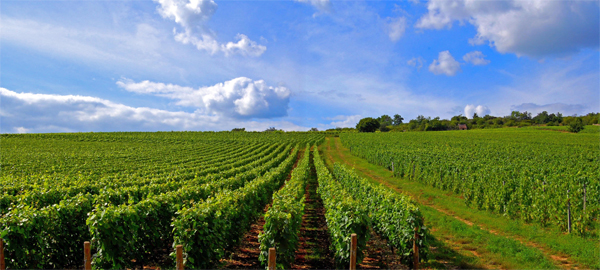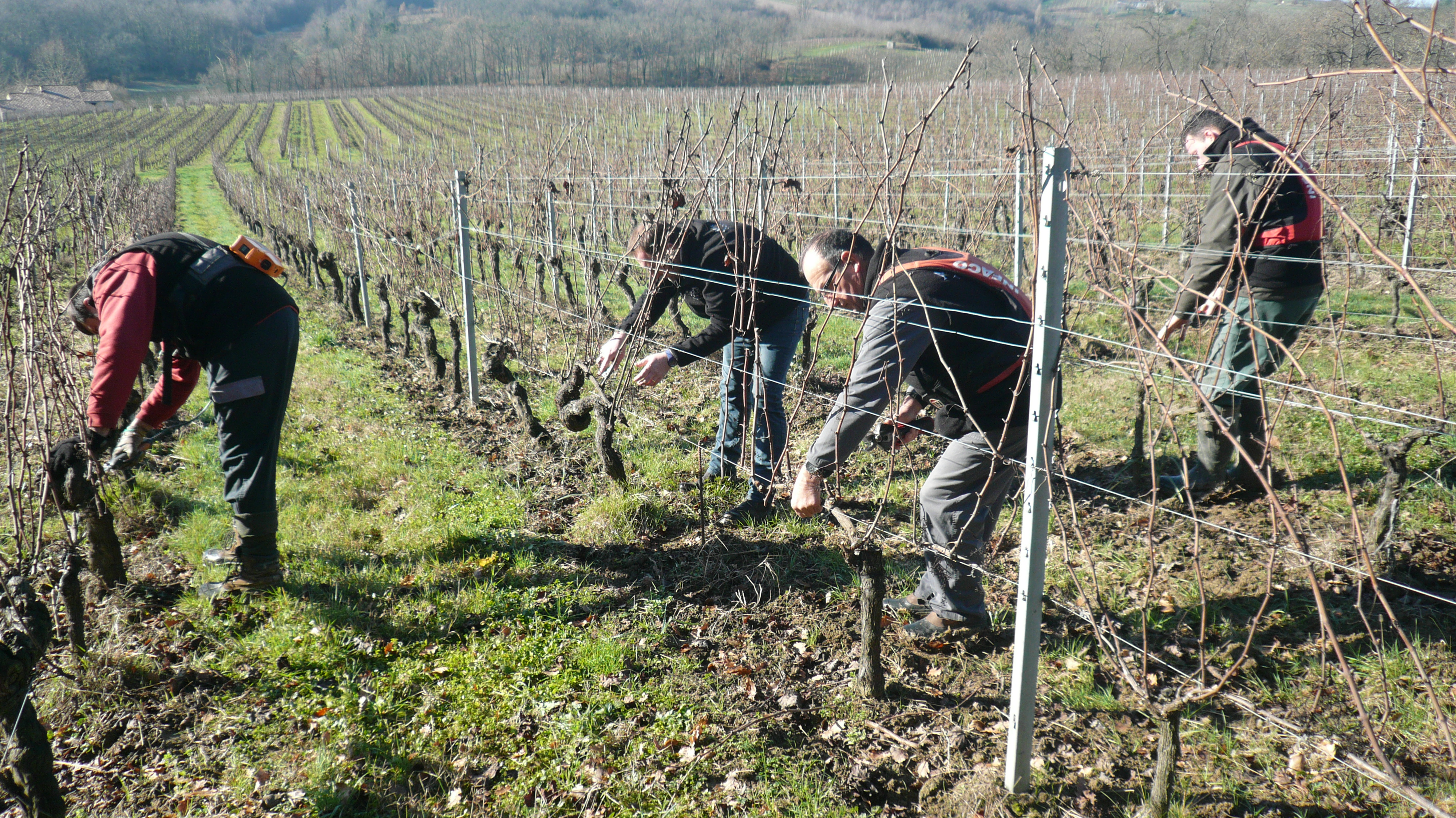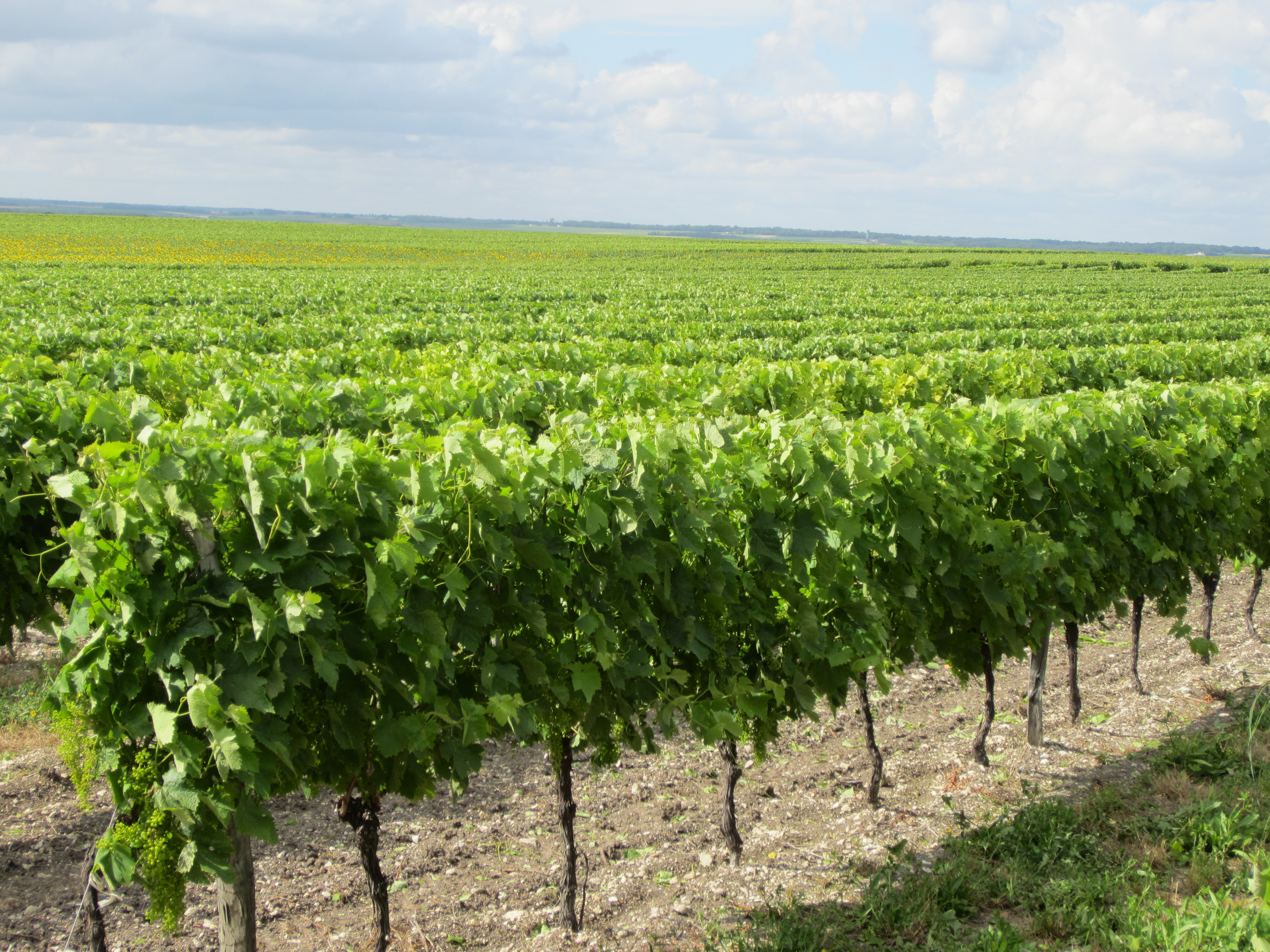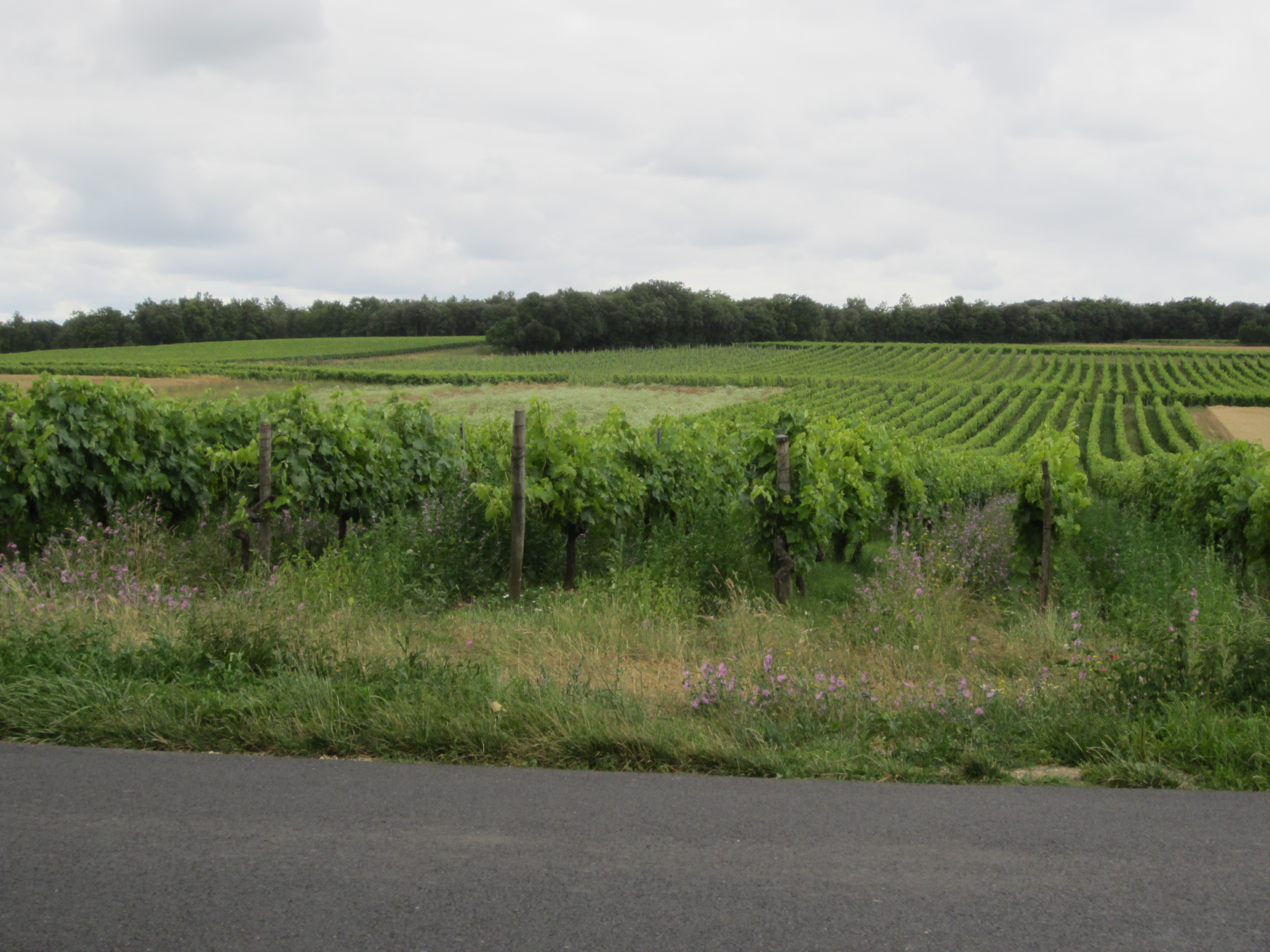The vineyard, introduction
Vintners work in the vineyard most of the year. Pruning in particular is very time-consuming and also quite heavy work. But treating the crops against diseases and removing weeds also take a lot of time.
The vineyard
When you drive through the cognac region, the vineyards all look very orderly. Everywhere the vines are neatly pruned in long rows.

This has by no means always been the case. More than a century ago (especially before the phylloxera crisis; after this crisis, most vineyards were replanted with resistant vines), there were still many vineyards where the vines were planted in bunches, which meant they were scattered lopsidedly across the land. You can still find this in more southern countries today, but no longer in the big French vineyards of any name. There are two main reasons for this change. The first is quality improvement. Placing the vines in neat rows allowed better pruning, which improved the quality of the grapes. The second is mechanisation: the emergence of picking machines. This started back in the 1960s and today it is an exception when anywhere is still picked by hand. One advantage of hand picking is that you can make a selection of good bunches and bad bunches while picking. But hopefully most of the diseased and affected bunches will have been removed anyway, when the picking machine will do its work in October. While working in the vineyard during August and September, the farmer has, of course, already carried out inspections. For the machines, the height and distance between the rows is important. The rows used to be spaced about 1.5 metres apart, but nowadays 2.8 – 3 metres. Within a row, plants are spaced 1.2 – 1.5 metres apart.
Legally, there are also some restrictions. The distance between rows cannot exceed 3.5 metres. There must be a minimum of 2,200 vines per hectare and the number of buds per hectare must not exceed 80,000.
The wine year.
In November, after the harvest, the new wine year begins. After the mechanical harvest, the soil of the vineyard must be restored. Old vines over 30 years old are uprooted. Pruning in the large vineyards starts as early as December.
 This continues in the months of January, February and March. Weed removal also starts in March. In April, pruning continues in the large vineyards. In May begins ‘le traitement’ or treating, which means spraying with fungicides (pesticides against fungi). May also sees the start of tillage and weed removal. This is also the main work in June. In July, young shoots are led up and excess leaves are removed. The ‘treatments’ continue: every 10-14 days. In August: continue to tie up young shoots and control weeds. September is finally a quiet month, although treatments continue and some light work is still done in the vineyard. October finally sees harvesting.
This continues in the months of January, February and March. Weed removal also starts in March. In April, pruning continues in the large vineyards. In May begins ‘le traitement’ or treating, which means spraying with fungicides (pesticides against fungi). May also sees the start of tillage and weed removal. This is also the main work in June. In July, young shoots are led up and excess leaves are removed. The ‘treatments’ continue: every 10-14 days. In August: continue to tie up young shoots and control weeds. September is finally a quiet month, although treatments continue and some light work is still done in the vineyard. October finally sees harvesting.
Pruning
Pruning is necessary and even required by law. It is necessary because the vine is a liana, a woody creeper, that grows tremendously every year. The form of pruning is not prescribed in the cognac region, but in practice there are two main variants that are commonly used. The Cordon and the Guyot method.
The Guyot method creates a trunk with one or two (simple Guyot or double Guyot) annual shoots that are guided horizontally (the layers) and from which grow the tendrils on which the bunches of grapes will emerge.
The Cordon (de Royat) is very similar, but here the horizontal shoots are perennial.
Both forms can be high or kept low, but when the grapes are picked mechically it is a requirement that there is a minimum height. This is why you see more and more relatively tall vines in recent decades.
(Uitleg van Guyot, cordon en andere snoeivormen)
In terms of pruning, a distinction is made between winter pruning and summer pruning. Winter pruning (roughly from January to March, but sometimes as early as December and continuing until April) is intended to get the shape of the vine right. It involves coarse pruning, with more than 80% of the tendrils and shoots disappearing. An added advantage of this is that tendrils containing mould will disappear, preventing a sudden explosion of mould the following year. The main purpose of summer pruning is to remove too many young shoots, young leaves and buds so that the remaining tasks can become stronger and produce better quality grapes. Some of the bunches are also cut away. This pruning also allows more sunlight to reach the bunches that are preserved.
The higher pruning shape has another advantage: the above-ground part of the plant is less affected by the cold frozen soil in winter. On the other hand, in summer the plant can benefit less from the reflection of the sun’s heat on the soil. As a result, the grapes ripen as much as a week later these days than they used to.
Weeds
Usually, weeds are controlled between the vines. This is because the weeds absorb water and food from the soil that would otherwise benefit the vine plant. Also, a nice smooth surface will reflect heat from the sun more easily, which can benefit the vine plant.
Yet some farmers simply leave the weeds in place. This is cheaper, of course, because controlling them takes manpower and possibly the cost of the pesticide (usually chemical). Weeds also attract insects and other pests, which would be a natural protection against some of the vine’s pests. Finally, some think a natural biotopical habitat is simply healthier.



Comments
Vineyard intro — No Comments
HTML tags allowed in your comment: <a href="" title=""> <abbr title=""> <acronym title=""> <b> <blockquote cite=""> <cite> <code> <del datetime=""> <em> <i> <q cite=""> <s> <strike> <strong>